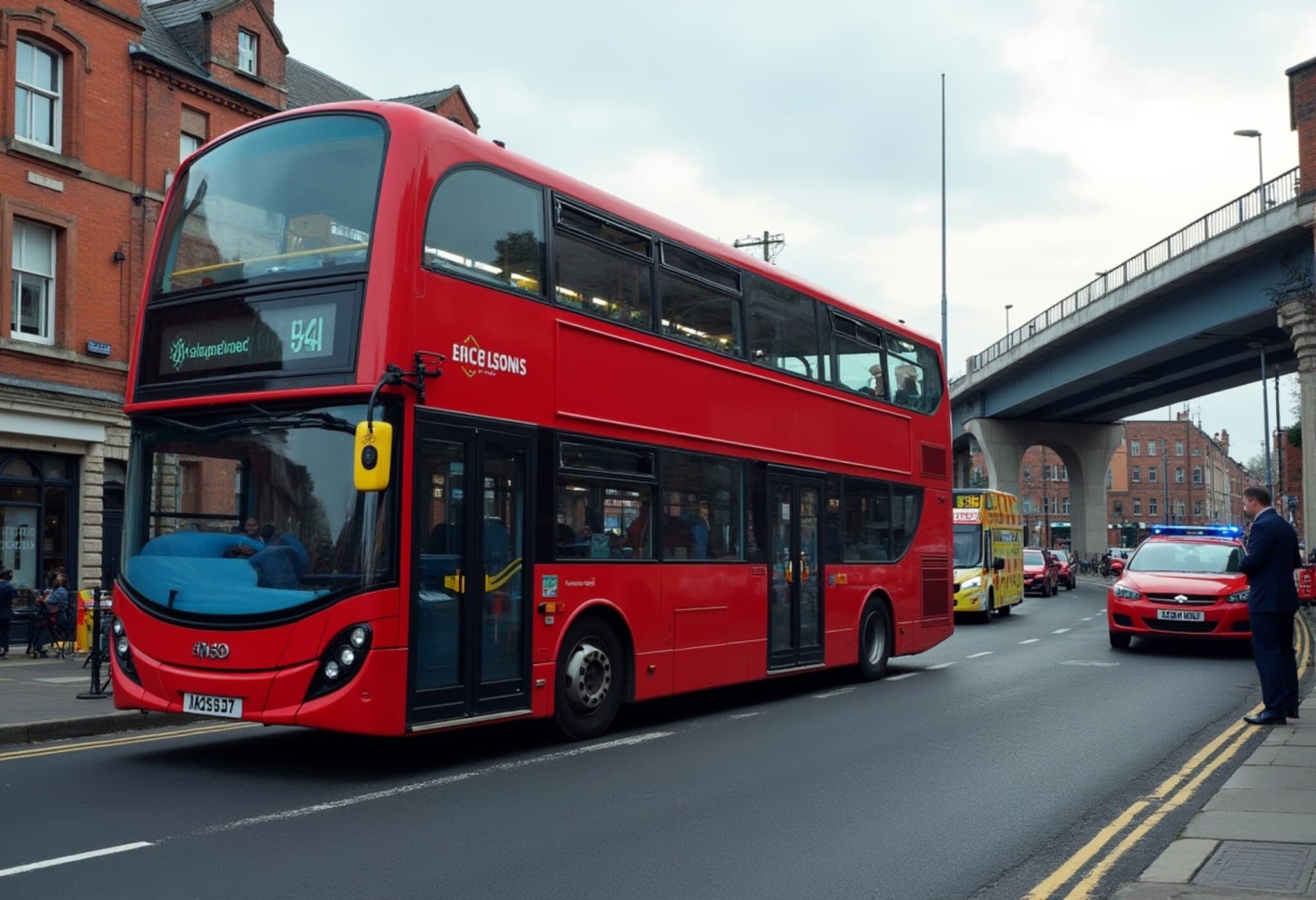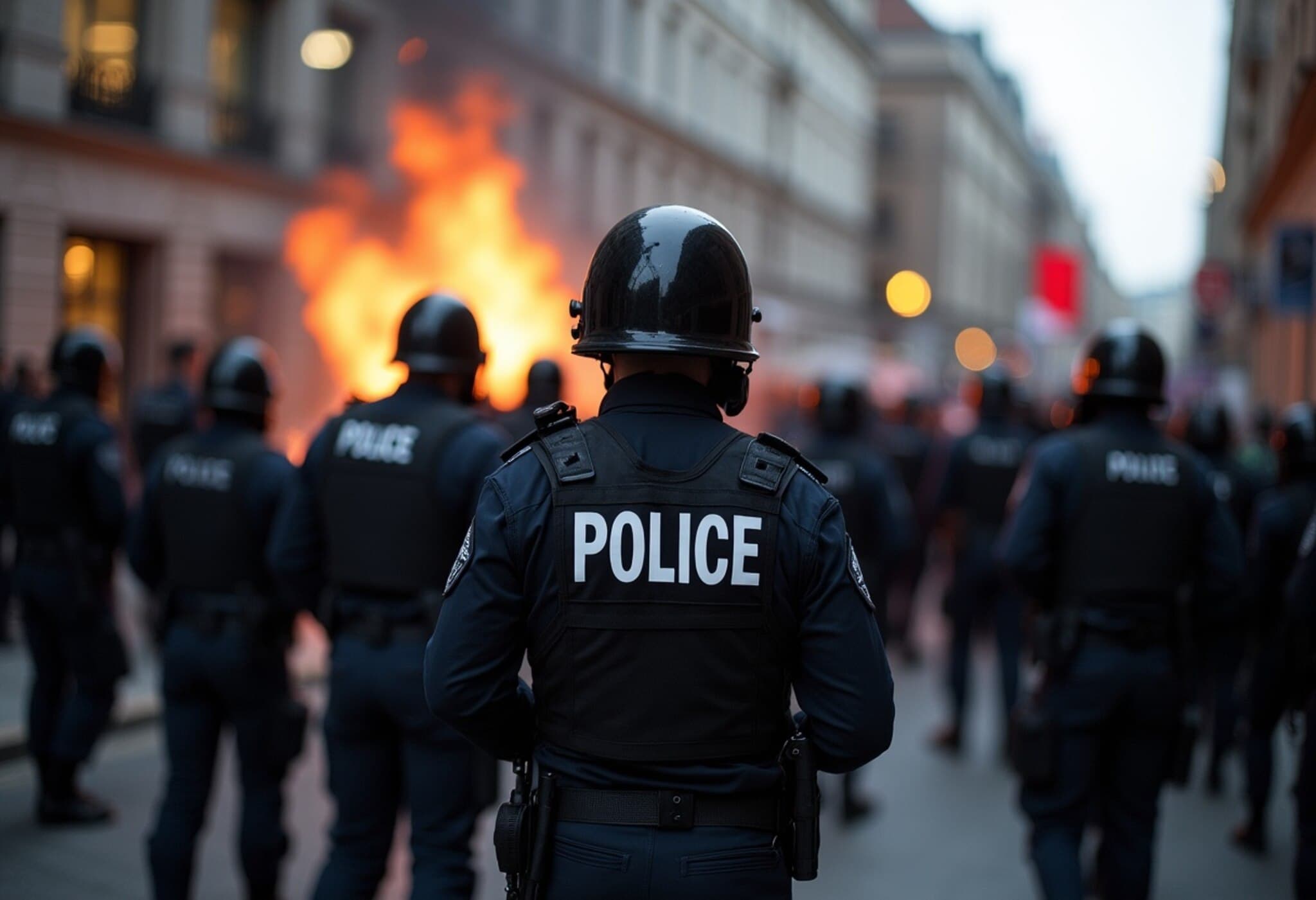Double-Decker Bus Strikes Low Bridge in Greater Manchester, Leaving 15 Injured
In an alarming accident Monday afternoon, a double-decker bus collided with the Bridgewater Canal Aqueduct on Barton Lane, Eccles, Greater Manchester, tearing off its roof and injuring 15 passengers. The incident occurred just after 3 p.m. local time, prompting rapid responses from emergency services.
Details of the Incident
Greater Manchester Police confirmed the collision took place at the intersection of Barton Road and Trafford Road. The bus, operating on TfGM’s number 100 route, attempted to pass under the low-standing bridge when its roof struck the structure, snapping off in the impact. Eyewitnesses described a harrowing scene, with some passengers from the upper deck reportedly falling onto the road below due to the sudden removal of the roof.
- Injuries: 15 people sustained injuries, with three classified as serious and one in critical condition.
- Medical Response: North West Ambulance Service (NWAS) dispatched 10 ambulances, treating all victims on-site before transporting them to Salford Royal and Manchester Royal Infirmary.
Witness Josh Tyldesley vividly recalled, "The bus’s roof was completely ripped off. It was a shocking sight." Another observer noted two passengers fell from the top level to the ground, underscoring the severity of the crash.
Recurring Safety Concerns at the Bridgewater Canal Aqueduct
The low clearance of this particular bridge has been flagged repeatedly as a hazard for taller vehicles like double-decker buses. Locals report this accident is the third or fourth collision at this site in recent years. Notably, a nearly identical incident occurred in April 2023, when another double-decker bus suffered roof damage after hitting the same bridge.
Vernon Everitt, Transport Commissioner for Greater Manchester, emphasized the urgency of a thorough investigation: "We are conducting an immediate and urgent inquiry to establish how this crash occurred and to prevent future incidents." This situation naturally triggers concerns about ongoing road safety and infrastructure adequacy in the region.
Expert Analysis: The Challenges of Urban Infrastructure and Public Transit Safety
The frequency of accidents at low bridges like this highlights a wider issue facing urban centers, especially those with historic infrastructure not designed to accommodate modern vehicles' dimensions. Cities across the US and UK grapple with similar challenges, balancing preservation with evolving transportation needs.
Policy experts suggest several key areas for action:
- Improved signage and height warning systems: Advanced and highly visible alerts can preemptively warn drivers about low clearance obstacles.
- Infrastructure modifications: Where feasible, altering bridge heights or rerouting taller vehicles can mitigate risks.
- Driver training and route restrictions: Public transit operators should enforce strict adherence to routes compatible with vehicle dimensions.
- Community engagement: Engaging local residents can uncover near misses or unreported issues, leading to preventative strategies.
Such multi-pronged approaches are critical not only for passenger safety but also for maintaining efficient, reliable public transit — a backbone of urban mobility and economic vitality.
What’s Next?
Authorities are expected to release their investigation summary in the coming weeks. Meanwhile, Transport for Greater Manchester and local officials face pressure to implement safety upgrades to this notorious 'black spot.' In a broader context, this incident underscores a pressing nationwide challenge: how to future-proof aging infrastructure against the demands of increasing urban populations and modern transportation.
Editor’s Note
The repeated collisions at the Bridgewater Canal Aqueduct serve as a stark reminder that urban infrastructure must keep pace with evolving transit realities. While emergency services handled this tragic event with commendable speed, preventing similar accidents will require proactive planning, investment, and community collaboration. For commuters and policymakers alike, safeguarding public transit means addressing both legacy infrastructure and real-time operational risks.
As readers, we might ask: How many more near-disasters are tolerated before decisive action reshapes these hazardous transit corridors? And, crucially, how can technology and policy align to protect passengers on the move?











